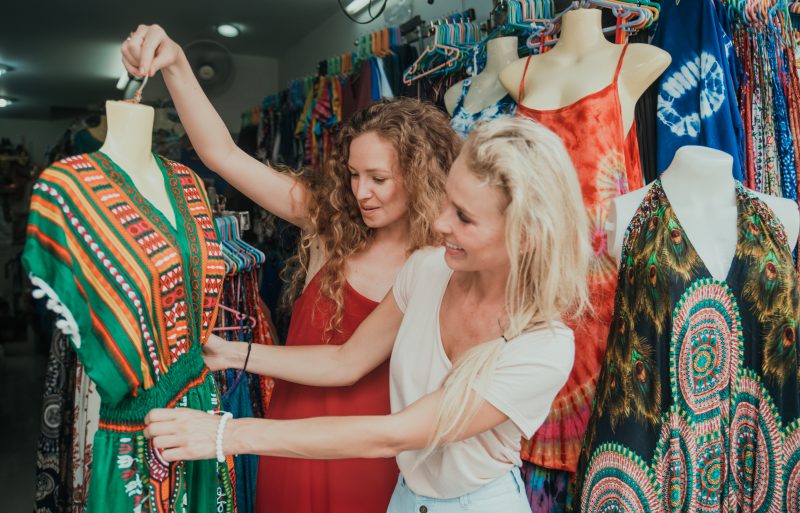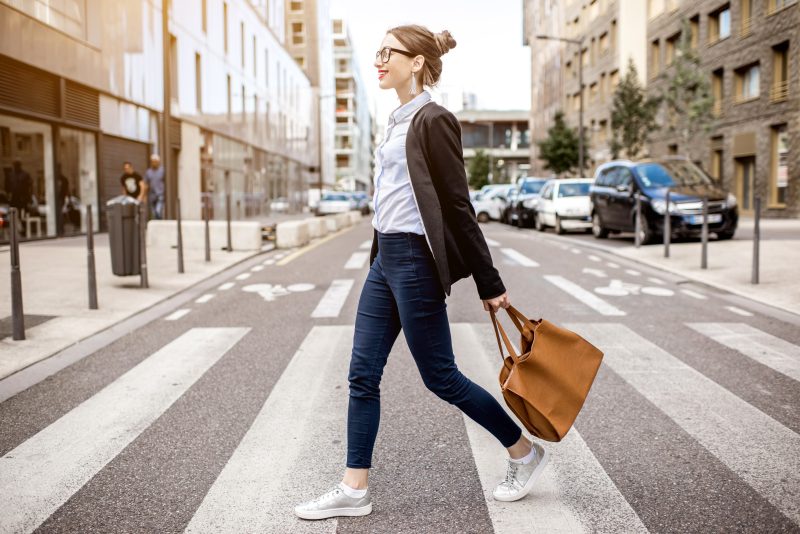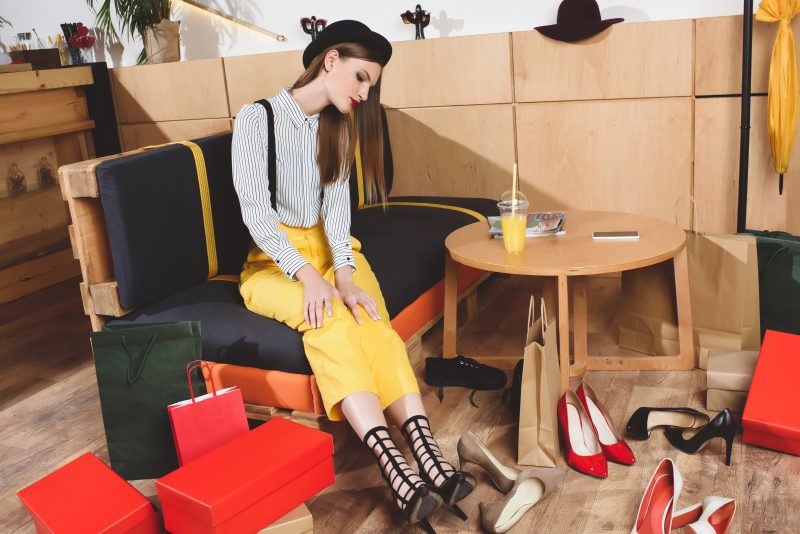Look, I’m going to be completely honest with you – the first time I hit Portobello Market, I basically did everything wrong and walked away feeling like I’d been personally victimized by London’s most famous vintage scene. This was maybe five years ago when I was still figuring out how to build a work wardrobe that didn’t make me want to cry every morning, and I’d read some article about how all the fashion insiders get their best pieces at Portobello. So naturally, I thought I could just show up and immediately become some kind of vintage hunting goddess.
I rolled up around noon on a Saturday (which, spoiler alert, is basically the equivalent of showing up to a sample sale after everything good is gone), had zero plan beyond “find cute stuff,” got completely distracted by the most amazing-smelling food stalls, and ended up dropping way too much money on this gorgeous 70s wrap dress that literally fell apart after one dry cleaning. The whole experience left me sunburned, broke, and convinced that maybe I just wasn’t cut out for the whole vintage thing.
But here’s the thing about being stubborn and having a decent salary – I kept going back. And slowly, very slowly, I started figuring out what I was doing wrong and how to actually shop this place like someone who knows what they’re about. Now, after probably fifty-plus Friday morning expeditions (yes, Friday mornings – we’ll get to that), I’ve got this whole system down, and I actually look forward to my Portobello runs the way some people look forward to their weekly therapy sessions.
What I’ve learned is that Portobello isn’t just some quaint London market where you casually browse for vintage treasures. It’s basically the fashion industry in microcosm – there are hierarchies, unspoken rules, and if you don’t know what you’re doing, you’re going to get schooled by people who absolutely do. The difference between walking away with genuine finds versus overpriced tourist bait comes down to knowing how to work the system.
So here’s everything I wish someone had told me before my first disaster of a shopping trip, because honestly? Once you crack the code, it becomes this incredible resource for building a wardrobe that’s both professional and actually interesting.
First things first – timing is literally everything, and not in the way you might think. Yeah, the market officially opens at 8 AM on Fridays and Saturdays, but the real action starts way earlier. I’m talking 7 AM, sometimes even earlier, when the dealers are still setting up and trading with each other. I learned this the hard way when I showed up at what I thought was a respectable 8:15 AM, only to watch some woman (who I later realized was a stylist for a major fashion magazine) walking away with what looked suspiciously like a perfect Hermès scarf. When I asked the dealer if he had anything similar, he just shrugged and said, “Early bird gets the worm, love.”
That moment was my wake-up call. Now I set my alarm for 6:30 AM on Friday mornings, grab coffee on the way, and I’m usually there by 7:15. Do I look slightly insane standing around in the early morning light waiting for stalls to open? Probably. But do I also get first look at the good stuff? Absolutely.
And yes, Friday mornings specifically. Saturdays are when all the tourists show up, which means crowds so thick you can barely move, let alone properly browse. The serious fashion people hit it Friday mornings to avoid the weekend chaos and because many dealers use Saturday to restock after Friday’s professional buyers have picked through everything. It’s like having early access to a sale – the selection is better and the shopping experience is actually pleasant.
The geography of this place is crucial and something I completely ignored during my early disasters. Portobello Road is long, and it’s not all vintage clothing. The antiques section starts near Notting Hill Gate – lots of silver, jewelry, decorative stuff that’s beautiful but not necessarily what you’re looking for if you want wearable pieces. The vintage fashion section is in the middle, roughly around where Westbourne Grove intersects. Further north, you get into more affordable second-hand territory and general bric-a-brac.
Most people make the mistake I made initially – either starting at the wrong end for what they want, or trying to see everything in one go. By the time you’ve wandered through the antiques section and gotten distracted by all the beautiful (but expensive) jewelry, you’re already tired before you hit the clothing section where the real treasures are.
Now I make a beeline straight to the middle section where the serious vintage dealers set up. There are some big names – One of a Kind, Pellicano, places like that – which have museum-quality pieces but charge accordingly. The real skill is knowing which less flashy stalls hide exceptional pieces at better prices. There’s this one dealer in the Admiral Vernon Arcade who specializes in vintage accessories, and I’ve gotten some of my best silk scarves and costume jewelry from her at prices that would make your head spin (in a good way).
Those covered arcades, by the way, are absolute gold mines that most casual shoppers completely ignore. The Admiral Vernon, the Lipka, Rogers Antiques Centre – these indoor sections house permanent dealers who often have the most carefully curated selections. I found my favorite vintage blazer (a perfectly cut 1980s piece that I wear constantly) in a tiny stall at the back of one of these arcades, tucked away where nobody was really looking. The dealer clearly didn’t realize what he had, and I may have done a little internal victory dance while trying to look nonchalant handing over cash.
My approach now is what I call the reconnaissance mission. First pass is quick – I’m not shopping, I’m surveying. I walk the entire length of the relevant sections, mentally flagging stalls that look promising, before circling back to actually start browsing. This prevents what happened to me multiple times in the beginning – finding something decent early on, buying it immediately, then discovering something amazing later when I’d already blown my budget. There’s nothing worse than finding the perfect vintage Chanel blazer when you’ve already spent your money on three merely okay pieces from earlier stalls.
The one exception to the reconnaissance rule is when you spot something truly exceptional that won’t last. In that case, grab first, continue shopping after. I once broke my own rule for a 1970s Diane von Furstenberg wrap dress in perfect condition that was priced about 60% below what it should have been. The dealer was clearly focused on moving inventory, not maximizing profit, and I wasn’t about to let that opportunity walk away while I finished my survey.
What to actually look for depends on your style, obviously, but some categories consistently offer better value than others. Vintage silk scarves are phenomenal at Portobello – I’ve found everything from Pucci to Dior at prices that, while not cheap, are significantly better than buying new. The key is knowing quality when you see it: hand-rolled edges, rich colors that haven’t faded, silk that still has body and drape. And familiarize yourself with signature patterns before you go – there’s nothing worse than finding out later that you passed up something amazing because you didn’t recognize what you were looking at.
Leather goods, especially jackets, are another Portobello strength. The vintage leather jacket game here is legendary among fashion insiders. My most treasured find is this 1960s cropped moto jacket in the most beautiful chocolate brown leather that cost me less than a contemporary version from Zara but looks like something from a designer archive. Quality leather is immediately obvious – it’s supple, has weight to it, and smells like leather rather than chemicals.
Jewelry requires more knowledge but can yield incredible finds. The high-end dealers know exactly what they have and price accordingly, but venture into the less flashy stalls and you sometimes find pieces that slipped through undervalued. I’ve developed an eye for Art Deco pieces and chunky 1970s statement jewelry, both of which turn up regularly and work perfectly with modern outfits.
The whole haggling situation was terrifying to me initially because I had no idea what was appropriate. These aren’t desperate sellers at a garage sale – they’re professionals who know their inventory’s value. The approach that works is respectful inquiry: “What’s your best price on this?” rather than immediately offering some lowball amount. This lets them suggest a discount they’re comfortable with rather than potentially insulting them.
Building relationships with dealers pays off massively over time. There are several vendors I’ve been buying from for years now, and they actually set pieces aside for me or give me first look at new acquisitions. This doesn’t happen overnight – it’s the result of being a good customer who’s knowledgeable, respectful, and actually buys things rather than just browsing endlessly. Learn names, show genuine interest in their expertise, don’t haggle aggressively on higher-value pieces where margins might already be tight.
What to wear while shopping might seem trivial, but it actually impacts your experience more than you’d think. Comfort is essential – you’re walking for hours – but there’s also strategy involved. The serious vintage hunters I know tend to dress relatively simply and classically. Looking too obviously “fashion industry” can sometimes lead to slightly inflated opening prices, though this might just be paranoia on my part.
My Portobello uniform has become almost tactical: comfortable leather shoes that can handle hours of standing (usually loafers or flat boots), layers for moving between stuffy indoor arcades and outdoor stalls, a crossbody bag to keep hands free, and something with decent pockets. Always bring a large foldable tote for purchases – juggling multiple small bags while trying to continue shopping effectively is impossible.
I also always carry a small measuring tape because vintage sizing is completely inconsistent. What’s labeled a size 10 from 1970 might fit like a contemporary 6 or 14 depending on the brand and decade. A magnifying glass helps inspect details, especially useful for checking jewelry hallmarks or fabric quality. One fashion editor I know carries a small UV light to check for invisible repairs on expensive pieces, which might be extreme for casual shopping but shows how seriously some people take their vintage hunting.
Cash is still preferred by many dealers, though more accept cards now than five years ago. Cash transactions are faster and sometimes help secure slightly better prices for reasons that probably have to do with administrative convenience. For higher-value purchases, though, cards offer protection that cash doesn’t, so there’s a balance to consider.
The physical demands are real. The market gets absolutely mobbed after 11 AM on Saturdays to the point where browsing becomes nearly impossible. The smart approach involves arriving early, staying hydrated (there’s a coffee shop at the Elgin Crescent junction that’s saved me multiple times), and knowing when to take strategic breaks. Even with my corporate job conditioning me for long days, Portobello in peak summer can be genuinely exhausting.
Seasons make a huge difference in both selection and experience. Summer brings the biggest crowds but also the most extensive inventory, as dealers save their best pieces for peak tourist season. Winter offers more civilized browsing but sometimes fewer exceptional finds. The sweet spots are early fall and late spring – good selection, manageable crowds. Rainy days, while unpleasant, often offer the best actual shopping conditions since casual browsers stay home while dealers still set up.
What separates a good find from a great one usually comes down to thinking about how it works in a contemporary context rather than getting lost in vintage for vintage’s sake. The most successfully dressed women I know use vintage as elements within modern wardrobes, not as costume. That museum-worthy 1950s cocktail dress might be stunning, but will you actually wear it? The less dramatic but more wearable 1970s silk blouse that works with your existing pieces might be the better investment.
My most successful Portobello purchases have been genuinely versatile pieces – a 1960s camel coat that looks as current now as it did then, vintage cufflinks that elevate basic button-downs, a collection of silk scarves that transform boring work outfits into something memorable. The skill is distinguishing between momentarily appealing and actually timeless, which develops with experience but can be fast-tracked by asking yourself, “Will I wear this at least ten times in the next year?”
The sustainability aspect has moved from nice-to-have to central motivation for many shoppers. Beyond environmental benefits, there’s real value as quality new clothing becomes prohibitively expensive. I’ve watched certain vintage categories appreciate dramatically just in the five years I’ve been shopping seriously – pieces from recognized designers or historically significant eras can legitimately be considered investments now.
This investment potential creates interesting dynamics where dealers balance between selling to other professionals (quick turnover, lower margins) versus end consumers (higher prices, more time-intensive). Arriving early sometimes means competing with professional buyers who move with intimidating efficiency. I once watched a dealer from Tokyo buy an entire rail of 1970s dresses in under two minutes, barely glancing at individual pieces – a level of confident decision-making I can only dream of.
Instagram has transformed Portobello in interesting ways. Many dealers now maintain online presences, sometimes reserving their most photogenic pieces for digital sales where they can command higher prices. This changes the in-person hunting dynamic, but exceptional finds – pieces dealers might not fully recognize the value of – still appear regularly on physical stalls.
I’ve developed what I consider a reliable system: arrive by 8 AM Fridays, quick reconnaissance noting promising stalls, start serious shopping from the middle section working outward, coffee break around 10 when initial adrenaline fades, finish with leisurely browse of secondary sections. Be ready to move quickly on exceptional pieces but maintain discipline about quality and wearability. Build relationships with dealers whose taste aligns with yours. Always wear comfortable shoes.
Last Friday, I ran into a woman who looked exactly like me five years ago – slightly overwhelmed, clutching what appeared to be a printed guide with highlighted sections. She asked for advice, and I heard myself giving what sounded like a tactical briefing about timing, territory, and targets. She looked simultaneously grateful and terrified.
“Is everyone here so… intense?” she asked, watching a woman I recognized as a costume designer move toward a vintage denim stall with laser focus.
“It’s not intensity,” I told her, “it’s just knowing what you’re looking for and how to find it efficiently.”
As she walked away to start her own adventure, I spotted a dealer unpacking a box of what looked like 1960s costume jewelry at a stall I’d somehow never noticed before. I casually wandered over, maintaining that carefully neutral expression every experienced Portobello shopper perfects while internally calculating how quickly I could get there before anyone else spotted the potential treasure.
Some things about serious vintage hunting, I guess, never really change.



